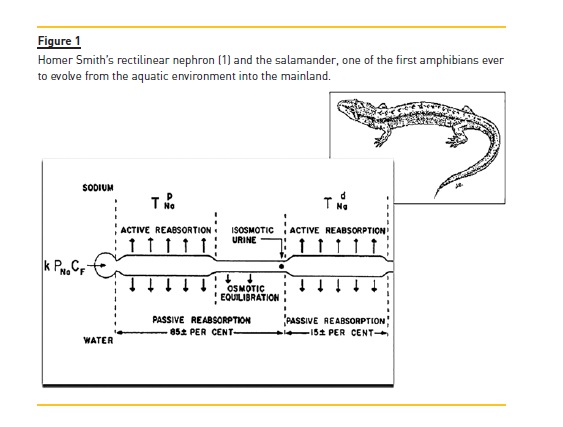Serviços Personalizados
Journal
Artigo
Indicadores
-
 Citado por SciELO
Citado por SciELO -
 Acessos
Acessos
Links relacionados
-
 Similares em
SciELO
Similares em
SciELO
Compartilhar
Portuguese Journal of Nephrology & Hypertension
versão impressa ISSN 0872-0169
Port J Nephrol Hypert vol.32 no.1 Lisboa mar. 2018
EDITORIAL
Fighting glomerular hegemony: giving the renal tubule the credits it deserves
Joaquim Calado
Department of Nephrology, Centro Hospitalar de Lisboa Central; Centre for Toxicogenomics and Human Health (ToxOmics), Genetics, Oncology and Human Toxicology, Nova Medical School/Faculdade de Ciências Médicas, Universidade Nova de Lisboa
Department of Nephrology, Centro Hospitalar de Lisboa Central; Centre for Toxicogenomics and Human Health (ToxOmics), Genetics, Oncology and Human Toxicology, Nova Medical School/Faculdade de Ciências Médicas, Universidade Nova de Lisboa.
This new editorial feature, the tubular quiz, aims at renewing the interest of Portuguese nephrologists in both clinical evaluation and research in renal physiology and disorders that affect the renal tubule. The Editor strongly believes in the axiomatic statement that physiology must always precede pathology. Understanding the functioning logic of the kidney is quintessential for every nephrologist.
Of all organs and complex systems of higher organisms, the kidney was among the first to have its physiology dissected (Figure 1), in the early years of the second half of the twentieth century, largely due to the pioneer work of Homer W. Smith (1895-1962).

In tubular physiology, one must also understand the two singularities inherent to the kidneys functioning logic that have boosted our understanding of tubular function. Firstly, the end-product of the kidneys processing of the extra-cellular compartment (i.e., urine) is, unlike any other organ, easily available to everyone: from the physician in the emergency room to the most state-of-the-art physiology lab investigator. By simply looking into the urine, its pH, density, osmolality, presence and/or excretional fraction of solutes, a huge amount of information can be gained.
And secondly, the renal tubule, like any other epithelia, is a highly polarized structure, meaning that all the channels, pumps and transporters that populate it must be expressed in the right cell and targeted to the proper subcellular compartment. Mutations in any of those will lead to a specific phenotype, the study of which, in turn, will generate more information on the affected tubular segment. Mendelian inherited phenotypes have been, accordingly, a major source of knowledge regarding tubular function.
With this in mind, we invite all PJHN readers to submit to the Editor a short clinical vignette concerning cases they have experienced and covering acid-base, water and electrolyte disorders, of either inherited selective tubulopathies or acquired generalized tubular dysfunction, in pediatric or adult patients and affecting native or transplanted kidneys. Tables and imaging are welcome.
Selected cases will be jointly presented and discussed by the Editor and authors, with highlights or multiple choice questions for the most pertinent topics.
References
1. Smith HW. The Fate of Sodium and Water in the Renal Tubules. Bull N Y Acad Med. 1959;35(5):293-316. [ Links ]
Joaquim Calado, MD, PhD
Department of Nephrology, Centro Hospitalar de Lisboa Central
E-mail: jcalado@nms.unl.pt
Disclosure of potential conflicts of interest: none declared
Received for publication: Mar 30, 2018
Accepted in revised form: Mar 30, 2018














